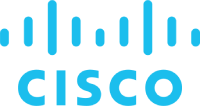Amid public sector hiring challenges, researchers highlight telework, flexibility as path forward
Alongside a meteoric rise in all things digital and telework, COVID-related burnout has hit public organizations hard. Two years on, government organizations are struggling to fill vacancies and bring back jobs lost to pandemic-driven budget cuts. A March 2022 report from ZipRecruiter found that while the private sector has recovered more than 90 percent of jobs lost over the past two years, the public sector has only recovered 53 percent.
According to Jim Perry, distinguished professor emeritus in the Paul H. O’Neill School of Public and Environmental Affairs at Indiana University and former editor-in-chief of the Journal of Public Affairs Education and Public Administration Review, there’s a clear reason for this. Perry is author of the book “Managing Organizations to Sustain Passion for Public Service.”
“People are asked to do a lot in local governments, be it city or county, and that’s been a source of a lot of stress recently and that stress has obviously burned people out,” Perry said. Just as airline attendants have been forced to deal with unruly passengers and medical workers asked to care for an increasingly stressed-out population, “We see the same issues in school boards, where parents are attacking school board staff. … That’s just, I think, the tip of the iceberg.”
Generally, those who enter public service do so out of a desire to help their community, and because of that, they’re committed to their work, Perry explained. Under normal circumstances, this is healthy; but in the shadow of an intense workforce evolution into the digital realm, and unprecedented stress that began with stay-at-home orders and hasn’t recovered, that dedication has taken a toll. In some cases, with administrators working themselves to the point of exhaustion and first responders on the front line of the pandemic, it’s inadvertently put government employees at serious health risk.
On top of that, telework “activities have been accelerated enormously,” he continued. This has presented challenges and opportunities for local and county governments.
Perry outlined at least two solutions to this workforce conundrum: flexible and hybrid telework situations and increased mental health support.
“We’ve put a heavy burden on public employees, but we’ve not provided them with resources to help them cope,” Perry said, stressing that those in public service “are highly resilient and prepared to do difficult jobs.”
Given this, the question becomes, “to what level are public admins prepared to shift, not necessarily at the pay and benefits side, but to other areas?” Perry said. “One idea that comes from private research is ‘job crafting’—giving employees greater employ over the work they do.”
This could be a useful strategy in professions that aren’t able to take their work online. Employees could keep “the good” and cut out “the bad” for a better, less stressful employment experience. Notably, this method is constrained in the public sector by legal requirements.
Emily Mee, a second-year Ph.D. student at the Paul H. O’Neill School of Public and Environmental Affairs and a co-author with Perry on a recent report published in the Journal of Public Affairs Education titled “The evolution of organizational forms for public service education,” highlighted increasing workplace diversity as another important tool administrators should leverage. Additionally, the rapid evolution into the digital realm offers public employers an opportunity.
“Some of these jobs in the public sector cannot be removed remote—we have some barriers the private sector doesn’t have—you cannot make a firefighters job remote. But I think we are improving on the technological aspect; we’re developing the technological infrastructure,” she said. “Instead of being exclusively tied to one physical place, especially in regard to networking, “we could see the future of public service be a network that’s much more integrated across geography.”
Beyond these and other, the public sector is facing a structural challenge that’s not tied to the pandemic, Perry said.
“It’s my view that governments have perhaps put far too much value on extrinsic rewards—pay, benefits,” he said. “What we’ve failed to do is emphasize to young people coming into the workforce the spectacular (intrinsic) rewards some people get in the public work force.”
As opposed to the more abstract intrinsic benefits that come from service the community and helping people in concrete ways, much focus has been historically placed by administrators on competing with the private sector by offering lucrative benefit packages and higher salaries. But there’s no shortage of young people who might be willing to step into the public sector with the right connection. The problem, according to Perry, lies in a system-wide disconnect between local governments and educational institutes training students.
“Public employers should also be looking more to the resources that are abundantly available in the schools of public administration, public policy and public service,” Perry said. Even though public universities have a mission to support civic services, local governments “are not scurrying to those organizations,” Perry said. In regard to research and administrative expertise, “All those are resources local governments can use, but they’re not tapping into them effectively. That, going forward, has to be a priority for local governments, because they can help solve the problems administrators are currently wringing their hands about.”
With the rise of all things digital and telework, Mee stressed the governments of all sizes and locations are “uniquely positioned with this boom in online education to create those partnerships.”
And there is positive change on the horizon. Pointing to the federal government’s pivot toward more telework opportunities—a position it was previously opposed to—Perry noted, “I think we’re sort of learning from the recent past.” While change might not come as quickly as some would hope, local governments “are fully capable” of adapting to today’s modern workforce expectations.





















